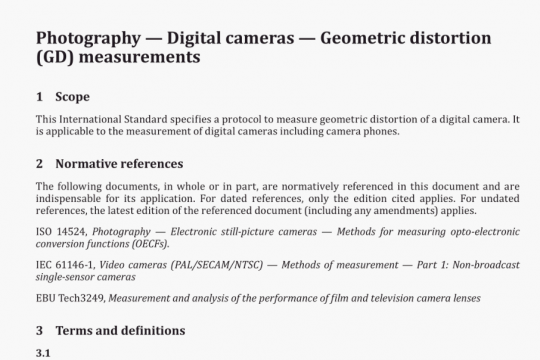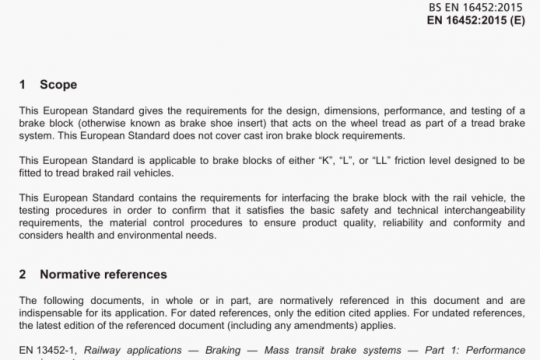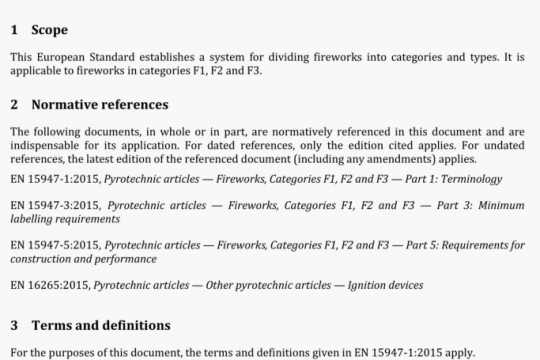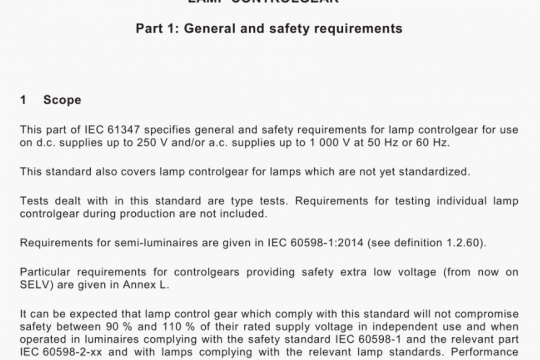BS EN 50317:2012 pdf download
BS EN 50317:2012 pdf download.Railway applications一 Current collection systems Requirements for and validation of measurements of the dynamic interaction between pantograph and overhead contact line.
Where a tethered test is used to measure the total mean uplift force the following requirements shall be fulfilled.
A tethered test determines cord force(s). The total mean uplift force is the sum of all mean values of the measured cord forces at the chosen height, speed and measurement conditions.
The aerodynamic force is the total mean uplift force minus the static contact force.
For this measurement the pantograph shall be restrained at a height as near as possible to the contact wire height for which the result shall be valid. The restraint shall be provided by vertical cords to each collector strip. The cords shall have adequate tensile stiffness, to constrain pitching of the head.
The accuracy of adjustment shall be checked on horizontal track without cant. The collector strips shall be adjusted so that the along track and cross track errors are less than 1,50 relative to plane of rails.
The contact wire shall not touch the pantograph during the test.
NOTE 1 A typical distance between collectoc head and contact wire is 10 cm to 15 cm.
The force in each cord shall be measured.
The dynamic behaviour of the cord forces depends on a number of influences (surrounding conditions, turbulence around the cords, track conditions, tunnels…).
To achieve confidence with the results the variance of the forces recorded and their repeatability over different sections shall be demonstrated.
The speed dependency shall be measured between 80 km/h and the maximum speed in steps. The step shall be chosen in accordance with the maximum train speed.
NOTE 2 A typical step is 20 knVh or 5 steps for the complete speed range.
In addition to the conditions recorded according to Clause 5, the train configuration and driving direction and also the restrained height and wear conditions of the collector strips shall be noted.
As a result of the tethered test the total mean uplift force as a function of speed for the measured configuration shall be presented.
7 Measurement of contact force
7.1 General requirements
The measurement of contact force shall be carried out on the pantograph using force sensors. The force sensors shall be located as near as practicable to the contact points.
The measurement system shall measure the vertical component of the contact forces, minimising interference from forces in other directions (e.g. contact friction).
All sensors shall be temperature compensated for the measuring conditions.
For pantographs with independent contact strips each contact strip shall be measured separately.
The measurement system shall be immune to electromagnetic interference.
Deviations from the original pantograph mass and geometry caused by installation of the measurement system shall be minimised.
The maximum error of the measurement system shall be less than 10 % of the measured value.
The contact force shall be calculated by the following formula which includes the signals from the force sensors and from the acceleration sensors (inertia correction, see 7.3) as well as the aerodynamic force correction (7.4).BS EN 50317 pdf download.




